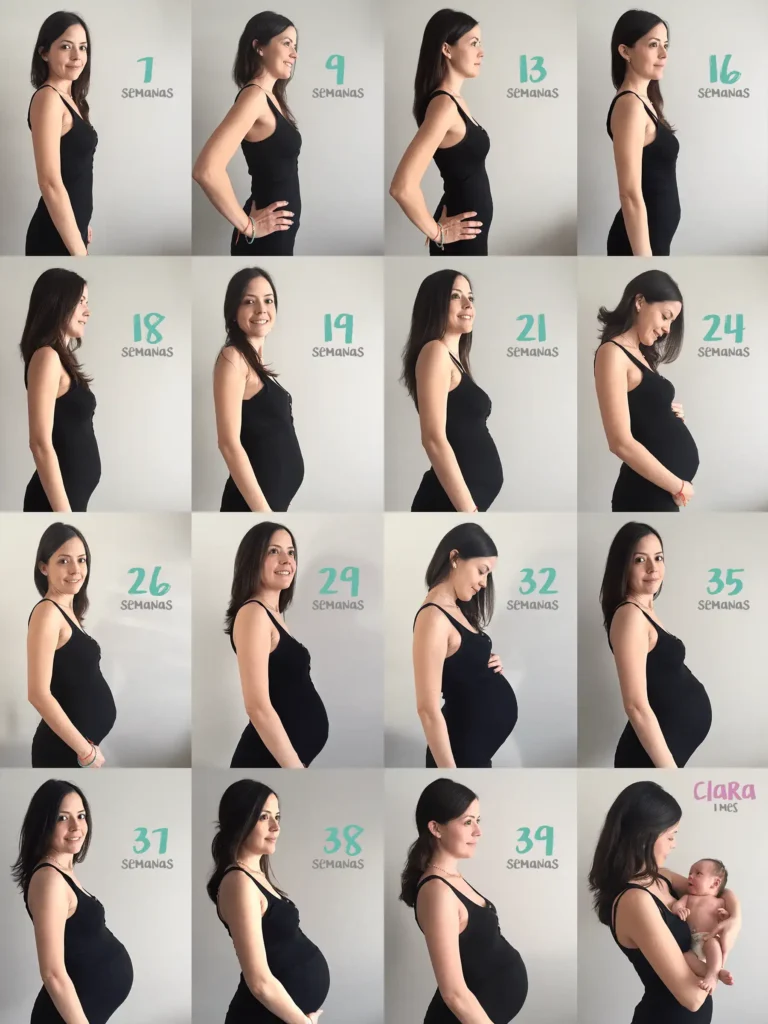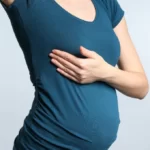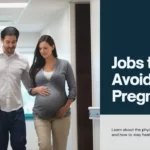
Are you ready for a journey that is equal parts exciting and mysterious? A journey that will leave you with a new perspective on life? Well, get ready, because we’re about to embark on a wild ride – the journey of pregnancy!
Pregnancy is a magical time that’s full of surprises. You never know what to expect, from the moment you see those two pink lines on a pregnancy test to the day you hold your little bundle of joy in your arms. It’s a rollercoaster ride of emotions, physical changes, and unexpected twists and turns.
But one question that’s on every pregnant woman’s mind is: when do I start to show during pregnancy? Will I have a tiny baby bump that only I can see, or will I look like I’m smuggling a watermelon under my shirt? The answer is different for every woman, and that’s what makes this journey so unique.
So buckle up and get ready for a wild ride! We’re about to explore the timeline of physical changes during pregnancy, the factors that influence when a pregnant woman starts to show, and the emotional and mental impacts of these changes. By the end of this journey, you’ll have a new appreciation for the magic of pregnancy and the incredible journey that you’re on.
Related: When Do I Have to Stop Flying During Pregnancy? (Policies on 20 Global Airlines)
According to a survey conducted by the American Pregnancy Association, about 62% of women report starting to show during their second trimester, while 30% report starting to show during their first trimester, and 8% report not showing until their third trimester.
When do you Start to Show During Pregnancy?
Are you eagerly anticipating the first signs of your baby bump? The timeline for when you start to show during pregnancy varies depending on several factors. Here’s what you need to know about when your baby bump might make its debut
When do you Start Showing with a First Pregnancy?
Did you know that the number of times you’ve been pregnant can play a role in when you start showing? Yes, it’s true! However, don’t expect to see a baby bump in the first trimester – especially if this is your first rodeo. Generally, the first signs of a bump start to appear during the second trimester, anywhere between weeks 12 and 16.
But hold on, there’s more! Depending on your weight and body type, you might start showing earlier or later. If you’re someone with a petite midsection and a lighter weight, you may start sporting that bump closer to the 12-week mark. On the other hand, if you’re someone with a little more meat on your bones, you might not start showing until around 16 weeks.
Related: What Are Common Discomforts During Pregnancy?
When do you Start to Show with a Second Pregnancy?
If you’re wondering when you’ll start to show during your second pregnancy, the answer may surprise you! Typically, women tend to show a little earlier during their second pregnancy than they did during their first. This is because the abdominal muscles and skin have already been stretched out once before and may not be as taut as they were the first time around.
While there’s no hard and fast rule about when you’ll start to show during your second pregnancy, you can generally expect to see the first signs of a bump anywhere between 12 and 16 weeks, just like with your first pregnancy. However, some women may start showing a little earlier or later depending on their body type and weight.
Related: 10 Best Pregnancy Support Belts: Supporting Your Belly and Back
When do you Start to Show with Twins?
Generally, women who are pregnant with twins tend to show a little earlier than those who are carrying a single baby. This is because there’s simply more growth happening in your uterus, so there’s less room for everything to stay tucked away.
You might start to notice a baby bump as early as 10 weeks into your pregnancy. By the time you reach 20 weeks, you’ll likely have a pretty prominent bump, and people will be able to tell that you’re pregnant. Of course, this can vary depending on your body type, weight, and other factors.
Related: Best 10 Pregnancy Pillows for Happy Pregnancy
Should You be Worried if You haven’t Started Showing Yet?
Are you feeling anxious because you haven’t started showing yet and worry that your little bundle of joy might be too small? Fear not! There are many reasons why you might not look very pregnant in the early stages. For starters, everyone’s body is unique, so don’t compare yourself to others. Plus, factors such as your weight, height, and muscle tone can all impact when you start showing.
It’s important to remember that not showing early on doesn’t automatically mean that something is wrong with your baby. During the second trimester, your ob-gyn or midwife will begin monitoring your fundal height to keep track of your baby’s growth. And if there is any cause for concern, they will order an ultrasound to assess your baby’s progress.
It’s not uncommon for some babies to be smaller than expected for their gestational age, but don’t worry! Your medical team will provide frequent monitoring to ensure your little one is doing well. So, relax and enjoy the ride. Before you know it, you’ll have a beautiful bump that everyone will be admiring.
Related: What happens at Second Trimester Prenatal Appointments?
When Should You Be Concerned?
Don’t worry if it hasn’t appeared yet, as there could be various reasons for it. However, if you’re still not showing in your third trimester, it’s best to talk to your doctor and get some expert advice.
One possible explanation for a lack of a bump could be your body type. If you’re on the smaller side, your baby’s gestational weight may be on the lower end, making it harder for your bump to show. Your doctor will keep an eye on your baby’s weight throughout your pregnancy and take necessary measures if needed.
On the other hand, high blood pressure is a concern for pregnant women as it can lead to your baby being small for their gestational age, resulting in a less noticeable bump. It’s important to seek medical help to manage high blood pressure and avoid any further complications.
Being overweight or obese can also affect the shape of your bump. It may not appear as rounded or shaped as it would on someone with a smaller body size. This can also increase the risk of complications like gestational diabetes mellitus, miscarriage, and preeclampsia. Don’t hesitate to discuss healthy and safe practices with your doctor to ensure a smooth and healthy pregnancy.
Related: What Is Ectopic Pregnancy?
What are the Factors that Affect when you will start Showing?

Here are some factors that can affect when you will start to show during pregnancy:
Age
Age can play a role in when you start showing during pregnancy. Younger mothers might have stronger abdominal muscles, which can keep their bump hidden for longer. Meanwhile, older mothers might have weaker abdominal muscles and a thinner layer of skin, which can make their bump more visible earlier on.
Body Type
Your body type can have a significant impact on when you start showing. Women who are thinner tend to show earlier than those who are carrying a little extra weight. This is because the uterus is closer to the surface of the skin, making it easier to see a bump. If you have a larger body frame, it may take longer for your bump to become visible.
Weight Gain
Weight gain is another important factor to consider. Women who gain weight quickly during pregnancy may start showing earlier than those who don’t gain as much weight or gain weight more gradually. Women carrying multiples may also show earlier due to the added weight of carrying multiple babies.
Number of Pregnancies
The number of pregnancies you’ve had can also impact when you start showing. Women who have been pregnant before might show earlier than first-time mothers, as their abdominal muscles have already been stretched and may be more relaxed.
Baby’s Position
The position of your baby can also impact when you start showing. If your baby is positioned towards the back of your uterus, it may take longer for your bump to become visible. On the other hand, if your baby is positioned towards the front of your uterus, you may start showing earlier.
Fitness Level
Your fitness level can also play a role in when you start showing. Women who exercise regularly and have strong abdominal muscles may show later in their pregnancies because their muscles can support their growing uterus. On the other hand, women who are less active may show earlier because their muscles are weaker and cannot support the growing uterus as effectively.
Gestational Age
Your gestational age can impact when you start showing. While most women start showing between 12 and 16 weeks, some women may not start showing until later in their pregnancies. This is because every pregnancy is different, and the size and growth rate of the baby can vary.
Genetics
Your genetics can also play a role in when you start showing. If your mother or sisters showed early in their pregnancies, you are more likely to follow suit. On the other hand, if your family members showed later in their pregnancies, it’s possible that you will too.
Diastasis recti
Diastasis recti refers to the condition where the muscles in the abdominal midline become separated. This usually occurs when the uterus expands during pregnancy and puts pressure on the abdominal muscles, causing the two large muscle bands in the middle to separate.
This separation can result in a noticeable bulge, which is considered a common occurrence. Individuals who have previously been pregnant, delivered large babies, or are over the age of 35 are more likely to develop diastasis recti.
Related: How to avoid Feet Growing during Pregnancy?
What to Expect During the First Few Months of Pregnancy?
During the first few months of pregnancy, you may not have a noticeable baby bump. However, you may experience other physical changes, such as:
- Tender or Swollen Breasts: Your breasts may feel sore or tender to the touch, and they may also appear larger or feel heavier.
- Fatigue: You may feel more tired than usual, especially during the first trimester.
- Nausea and Vomiting: Many women experience nausea and vomiting, particularly in the morning, during the first trimester.
- Increased Urination: You may need to urinate more frequently, as your growing uterus puts pressure on your bladder.
- Food Cravings or Aversions: You may have sudden cravings for certain foods or dislike foods that you previously enjoyed.
What are Signs That You Are Starting to Show?
As your pregnancy progresses, you’ll likely start to notice some physical changes in your body, signaling that you’re starting to show. These signs may include:
- Visible Changes: Your belly will start to protrude, and you may notice that your breasts are getting bigger too.
- Tighter Clothes: Your clothes may start to feel tighter around your waist and hips.
- Linea Nigra: You may notice a dark line running down the middle of your belly called the linea nigra.
- Swollen Ankles and Feet: Your body may start to retain more fluid during pregnancy, causing your ankles and feet to swell.
- Round Ligament Pain: You may experience discomfort or pain in your lower abdomen or groin area as your round ligaments stretch to accommodate your growing uterus.
- Braxton Hicks Contractions: Your body may start to prepare for labor with mild contractions that can feel like a tightening or squeezing sensation in your belly.
- Increased Appetite: You may find that you’re feeling hungrier than usual as your body works hard to nourish both you and your growing baby.
- Increased Energy: While the first trimester can be exhausting, many women experience a surge in energy during the second trimester.
- Pressure on Bladder: You may start to feel pressure on your bladder, which may lead to more frequent trips to the bathroom.
- Mild Cramping or Discomfort: You may experience mild cramping or discomfort as your uterus expands.
- Protruding Belly Button: You may notice that your belly button starts to protrude outward.
Related: Uncovering the Mystery of Molar Pregnancy
Pregnancy Belly Size Chart

A pregnancy belly size chart can be a helpful tool for expecting mothers to track the changes in their belly size throughout pregnancy. It’s important to keep in mind that every pregnancy is unique, and belly size can vary based on factors such as the size of the baby and the mother’s body type. Here’s a table that outlines general belly size and weight gain ranges by week of pregnancy, along with common symptoms.
| Weeks | Pregnancy Belly Size | Weight Gain (average) | Common Symptoms |
|---|---|---|---|
| 4 | Not noticeable | 0-2 lbs | Missed period, fatigue |
| 8 | Small | 2-5 lbs | Nausea, breast tenderness, fatigue |
| 12 | Beginning to show | 5-10 lbs | Less nausea, mood swings, cravings |
| 16 | Clearly visible | 10-15 lbs | Braxton Hicks contractions, back pain |
| 20 | About the size of a small melon | 15-20 lbs | Movement felt, shortness of breath |
| 24 | About the size of a large melon | 20-25 lbs | Swelling, heartburn, constipation |
| 28 | About the size of a basketball | 25-30 lbs | Difficulty sleeping, frequent urination |
| 32 | About the size of a watermelon | 30-35 lbs | Fatigue, difficulty breathing, varicose veins |
| 36 | Full-term size | 35-40 lbs | Braxton Hicks contractions, nesting instinct |
| 40+ | Depends on the individual | 25-35 lbs (estimated) | Decreased fetal movement, anticipation of labor |
Related: What is the Recommended Weight Gain During Pregnancy?
What are the Common Concerns about the Pregnant Belly?
Small Belly – Don’t Let It Get You Down!
Are you worried that your baby bump isn’t big enough? If your doctor or midwife tells you that it’s normal, then there’s no need to fret. However, if you do have concerns about a small belly, there could be a more serious underlying issue. Find out more about oligohydramnios and what you can do to keep your baby safe.
Large Belly – Is It a Cause for Concern?
Is your belly growing at an alarming rate? While it could just be a result of your previous pregnancy or other factors, it’s always best to get it checked out by your doctor. Discover the reasons why you may have an unusually large belly and how you can ensure the health of your baby.
High Belly – The Upside of a High Hump
If you’re carrying high, then you’ve got some great abdominal muscles! Being tall can also contribute to a high pregnancy belly, which is usually nothing to worry about. However, it’s always important to monitor the size of your bump and keep your doctor informed.
Low Belly – Don’t Let the Pressure Get to You
Feeling a lot of pressure down there? A low belly can cause discomfort, back pain, and pelvic pain, but it’s not always an indication that your baby is ready to make an early entrance. Learn more about what to expect and how you can manage the discomfort.
Wide Belly – Is It Just the Baby’s Position?
Are you carrying wide? Your baby might just be in a transverse lie, which isn’t necessarily a problem – unless they don’t turn their head down for labor. But don’t worry, sometimes an overweight pregnant woman may carry wide, which isn’t a cause for concern.
Conclusion
When you start to show during pregnancy can vary widely depending on your body type, your baby’s growth, and other factors. While most women start showing between 12 and 16 weeks of pregnancy, it’s important to remember that every woman’s experience is unique.
Remember, your pregnancy belly is temporary, so why not make the most of it? There are plenty of fun and special activities you can do to celebrate your growing baby bump. So don’t be afraid to show it off and enjoy this special time in your life!
Related: 10 Reasons – Why do Cats Attack Pregnant Women?
Frequently Asked Questions
Can you Start Showing During the First Trimester?
It’s rare to start showing during the first trimester, as your baby is still very small at this point. However, some women may notice a slight bump or bloating around their midsection.
Can your Baby Bump Size Predict your Baby’s Gender?
No, the size of your baby bump has nothing to do with your baby’s gender. The shape and size of your bump are determined by factors such as your body type, your baby’s position, and the amount of amniotic fluid in your uterus.
When will your Baby Bump be Most Noticeable?
Your baby bump will typically be most noticeable during the second trimester, as your baby grows and your uterus expands.
Can my Diet Affect when I Start to Show During Pregnancy?
No, your diet won’t affect when you start to show, but it’s important to eat a healthy, balanced diet throughout your pregnancy.











